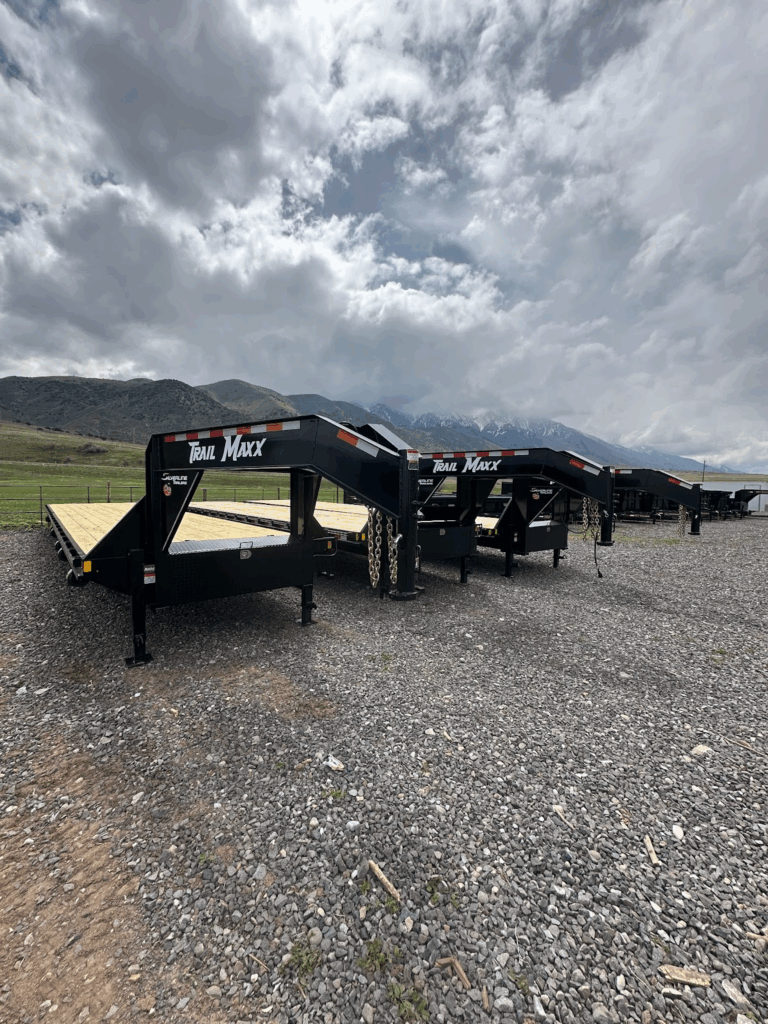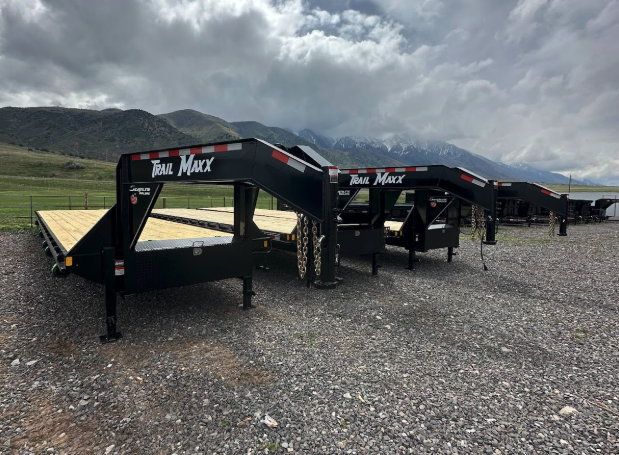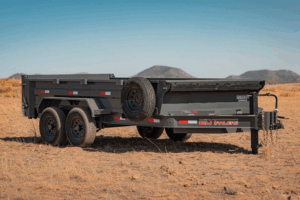On your search for a new trailer, it’s easy to get overwhelmed by the sheer number of options available to you. Keeping track of all the different terms, trailer types, and other specifications can make choosing the best one for you feel like a tricky task. One of the most capable and versatile designs you will find is the deckover trailer, so taking a look at these powerful trailers is a great place to start your search.

The Advantages of a Deckover Trailer
The popularity of the deckover trailer stems from a few key design advantages that directly address common hauling challenges. These benefits make it the preferred choice for a wide range of commercial and personal uses, offering a level of flexibility that other trailers cannot match.
The Flat Deck Design
The most significant benefit is the completely unobstructed flat deck. By placing the deck surface above the wheels, the design eliminates the need for wheel wells or fenders that intrude on the loading area.
The flat deck creates a single, continuous platform that maximizes usable space. This feature is particularly valuable when you need to transport wider loads. Items like large tractors, wide stacks of hay, or oversized pallets of material can be loaded without worrying about fitting them between fenders.
Easy Loading and Unloading
The flat deck design also makes for incredibly easy loading and unloading, especially with a forklift. The absence of fenders means a forklift can approach the side of the trailer directly to place or remove pallets and heavy equipment.
This capability streamlines operations on busy job sites and in agricultural settings, saving time and reducing hassle. The sheer versatility of this open platform means it can adapt to diverse hauling needs. You can load it with construction debris one day and transport large, finished components the next, making it a powerful tool for many different industries.
Deckover Trailers vs. Equipment Trailers
While both are powerful tools for hauling, the terms “deckover trailer” and “equipment trailer” describe two distinct designs. The primary distinction between these styles is the deck’s position relative to the wheels. This single difference creates two very different hauling experiences, and choosing the right trailer depends entirely on your specific needs.
Standard Equipment Trailers
A standard equipment trailer features a deck that sits between the wheel wells. This design results in a lower deck height, creating a lower center of gravity and a less steep angle for loading. This makes it an excellent choice for driving vehicles or rolling equipment directly onto the trailer.
Many car hauler models use this lower-profile design for this reason. The major limitation, however, is the width. Your load must fit neatly between the fenders, which can be a challenge for oversized items.
The Deckover Trailer Difference
In contrast, the deckover trailer places its deck completely over the tires. While this leads to a higher deck surface, the advantage it provides is even greater loading width and flexibility. Without fenders to get in the way, you gain a significant amount of usable surface area.
This makes the deckover design the better choice for hauling wide materials, multiple pallets of goods, or bulky heavy equipment that would not fit on a standard equipment trailer. Both are heavy-duty options, but the choice comes down to prioritizing width versus height.
Common Uses for a Deckover Trailer
A deckover trailer’s true strength is its ability to handle many different jobs. The wide, flat deck makes it a favorite tool for several industries where flexibility is important. From large construction projects to farm fields, the deckover design consistently shows its value by hauling loads that other trailers simply cannot manage.
Construction and Job Sites
Construction crews depend on deckover trailers to keep their job sites running smoothly. This type of trailer is built for heavy-duty work. Its strong construction, often using a powerful I-beam frame, provides a high weight capacity.
This strength is needed to safely transport heavy equipment like small bulldozers, excavators, or other machinery from one site to another. The deckover design also makes loading materials much easier. Because there are no fenders in the way, a forklift can drive right up to the side to load pallets of bricks, roofing supplies, or bags of concrete. This easy access saves a lot of time and effort.
Agriculture and Farming
For farmers, the deckover trailer is an invaluable tool out in the field. Its main advantage is the extra width. It is perfect for hauling things like multiple large round hay bales, which are often too wide to fit between the fenders of a standard equipment trailer.
This allows a farmer to move more hay in fewer trips during busy times. The flat deck is also ideal for moving tractors and other farm implements. A high-quality deckover trailer has the durability to handle rough fields and demanding farm use day after day.
Landscaping and Property Maintenance
Landscaping businesses also get a lot of use out of deckover equipment trailers. They can carry everything a crew needs on a single trailer. This includes large commercial mowers, heavy pallets of stone for a new patio, or stacks of fresh sod.
The ability to load these materials from the side with a forklift is a huge plus. It also means a landscaping company can transport large pieces of brush or multiple machines to different locations in one trip. This saves fuel and time, making the business more efficient.
General Freight and Hotshot Hauling
The deckover is also a popular choice for professional hauling, especially in the hotshot trucking industry. This is because it can handle such a wide variety of freight. The design is perfect for loads that are wider than average or cargo that needs to be loaded from the side. This adaptability makes it a great investment for a small business that needs to be ready for any kind of hauling job that comes its way.
Key Features to Look For in a Deckover Trailer
When choosing a deckover, focusing on a few key features will ensure you get the right trailer for the job. First, decide on the hitch style. A bumper pull is a standard design, while a gooseneck connects inside the truck bed, offering better stability and weight distribution for very heavy loads.
Considering features that make loading safe and simple can be hugely beneficial when it comes time to use your deckover trailer. Many deckover equipment trailers include ramps, and some have a beavertail, which is a sloped section at the back that creates a gentler loading angle.
Pay close attention to the trailer’s construction and its GVWR (Gross Vehicle Weight Rating). This rating tells you the maximum weight the trailer can safely handle. Ensuring your deckover trailer has plenty of strong tie-down points to secure your cargo is super important. Optional features from a quality trailer manufacturer, like built-in toolboxes, can also add significant convenience.
Find Your Perfect Deckover Trailer at Silverline Trailers
Choosing the right trailer is a big decision, but now you know the power and versatility of the deckover design. The next step is finding the perfect model, and our team is here to help. As America’s largest trailer dealership, we have a massive inventory of high-quality new and used deckover trailers ready for any task. Don’t guess which trailer is right for you. Visit Silverline Trailers, and let our experienced team help you find the perfect hauling solution today.




